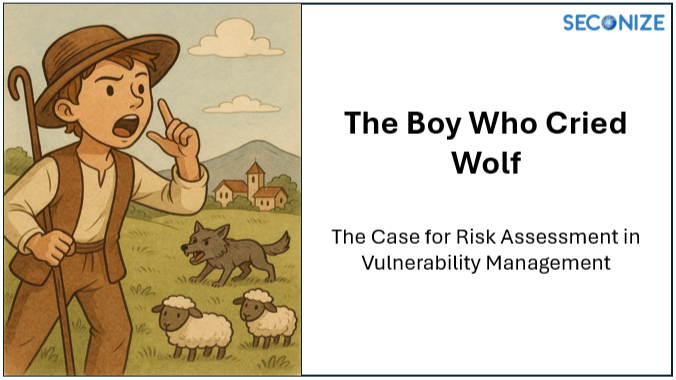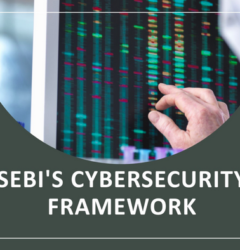

“There was once a shepherd boy who kept crying ‘Wolf! Wolf!’ just to see people panic… until one day, the wolf really came.”
This age-old fable holds a powerful lesson — and an even more powerful parallel in the world of cybersecurity and risk assessment.
The Boy, Reimagined as a Security Analyst
In our version, the boy is no longer a shepherd, but a Security Analyst.
He discovers a critical vulnerability in a production system — something that could, in theory, be exploited. Alarmed, he raises the flag and shouts across the organization:
🚨 “WOLF! We are under serious threat! Take down the system! Patch immediately! Pull engineers from every team!”
Everyone scrambles. Business is disrupted. Deadlines are missed. Chaos follows.
But upon further inspection, it turns out:
- No Exploit Code or Proof of Concept was constructed
- No known threat actors had exploited this vulnerability in the wild.
- The IP Address was not of production server but a UAT server.
- The vulnerable service was not exposed to the internet.
- There were compensating controls like WAF and rate-limiting in place.
- The actual risk score — considering all factors — was low.
In short: there was no wolf. Just a vulnerability without real teeth.
Why Crying Wolf Hurts Security
This isn’t just about being wrong — it’s about losing trust.
The next time this analyst finds a real, high-impact vulnerability, stakeholders may hesitate:
“Didn’t he cry wolf last time too? Let’s not overreact.”
And that hesitation could cost dearly.
How the Boy Should Have done Risk Assessment
Imagine if the boy had applied a little risk-based thinking — even before opening his mouth.
Let’s stretch the metaphor…
Step 1: Is That Really a Wolf? Or Just a Stray Dog?
In cybersecurity: Not every alert or CVE is critical. Is it even a valid vulnerability? Is there confirmed exposure?
Step 2: How Big Is the Wolf?
A small wolf pup might bark a lot but do no harm. A full-grown wolf is another story. Similarly, analysts should assess:
- Is the threat actor capable and active?
- Is there exploit code available?
- Is the system reachable and exposed?
Step 3: What’s the Impact If It Attacks?
Will the wolf eat the sheep, just bite them, or merely scare them?
In risk terms:
- Is it a business-critical system?
- Will it lead to data leakage, downtime, or reputation damage?
Step 4: Are There Any Defenses in Place?
Maybe there’s a fence around the sheep. Or maybe the boy carries a big stick to scare the wolf.
These are compensating controls — like:
- Firewalls and WAFs
- Rate-limiting
- Multi-factor authentication
- Monitoring and detection tools
Step 5: Then Calculate Risk — and Cry Wolf (Only If Needed)
If:
- The wolf is real
- It is big and dangerous
- The sheep are vulnerable
- There’s no sufficient defense
Then and only then should the boy cry out:
“WOLF! This is a real one. Act now!”
💡 The Lesson: Risk ≠ Vulnerability
Vulnerability alone does not equal risk. Just like shouting “wolf” because a dog barked doesn’t save the sheep — it only dulls the response when the real wolf arrives.
Security is about contextual intelligence, not just detection. Risk-based prioritization is the shepherd’s staff that separates signal from noise.
🔚 Final Thought: Don’t be the boy who cried vulnerability. Be the analyst who studied the wolf, calculated the threat, and cried only when it mattered most.
How Tools Like Seconize Help
At Seconize, we believe crying wolf should never be guesswork. Seconize DeRisk Center automatically:
- Ingests vulnerability data from scanners
- Performs threat analysis
- Evaluates compensating controls
- Calculates real-time risk scores
- Prioritizes what truly matters
So that when you cry wolf, it’s because there’s actually a wolf. Contact us for a demo now !
















Recent Comments